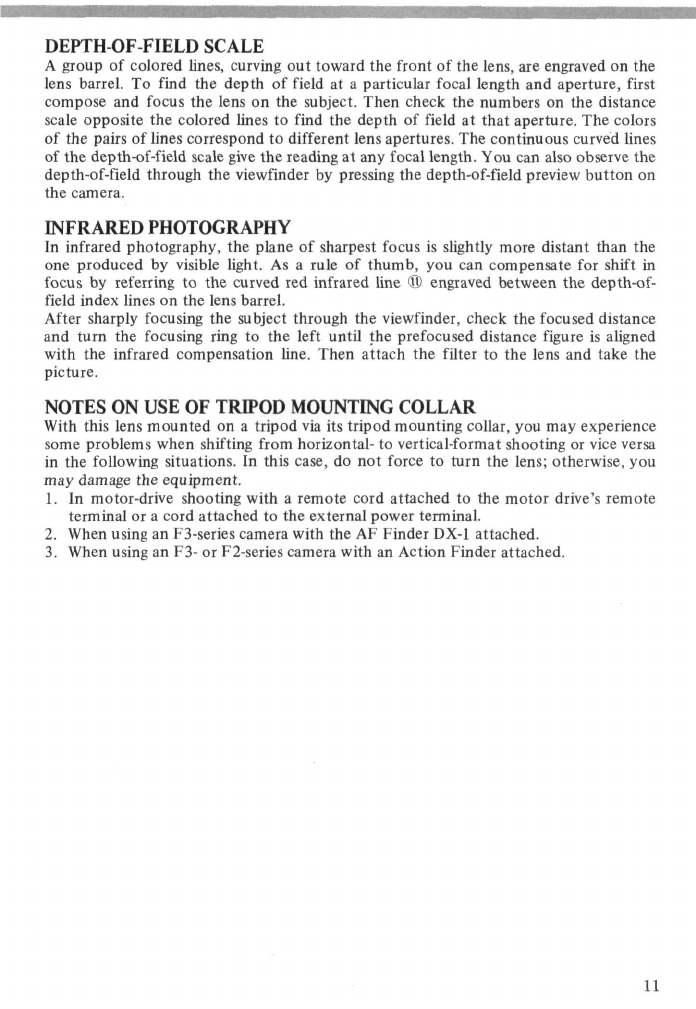
DEPTH-OF-FIELD SCALE
A group of colored lines, curving out toward the front of the lens, are engraved on the
lens barrel. To find the depth of field at a particular focal length and aperture, first
compose and focus the lens on the subject. Then check the numbers on the distance
scale opposite the colored lines to find the depth of field at that aperture. The colors
of the pairs of lines correspond to different lens apertures. The continuous curved lines
of the depth-of-field scale give the reading at any focal length. You can also observe the
depth-of-field through the viewfinder by pressing the depth-of-field preview button on
the camera.
INFRARED PHOTOGRAPHY
In infrared photography, the plane of sharpest focus is slightly more distant than the
one produced by visible light. As a rule of thumb, you can compensate for shift in
focus by referring to the curved red infrared line © engraved between the
depth-of-
field index lines on the lens barrel.
After sharply focusing the subject through the viewfinder, check the focused distance
and turn the focusing ring to the left until the prefocused distance figure is aligned
with the infrared compensation line. Then attach the filter to the lens and take the
picture.
NOTES ON USE OF TRIPOD MOUNTING COLLAR
With this lens mounted on a tripod via its tripod mounting collar, you may experience
some problems when shifting from horizontal- to vertical-format shooting or vice versa
in the following situations. In this case, do not force to turn the lens; otherwise, you
may damage the equipment.
1.
In motor-drive shooting with a remote cord attached to the motor drive's remote
terminal or a cord attached to the external power terminal.
2.
When using an F3-series camera with the AF Finder DX-1 attached.
3.
When using an F3- or F2-series camera with an Action Finder attached.
11


















